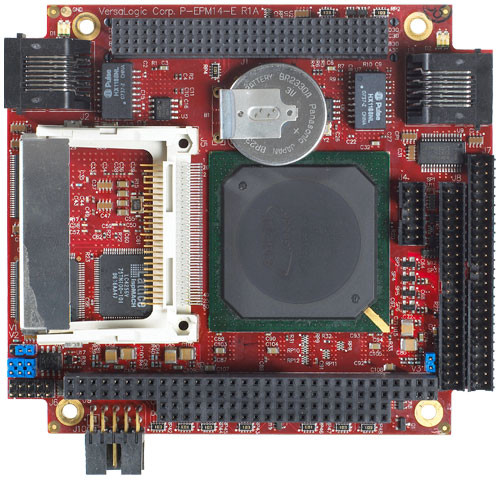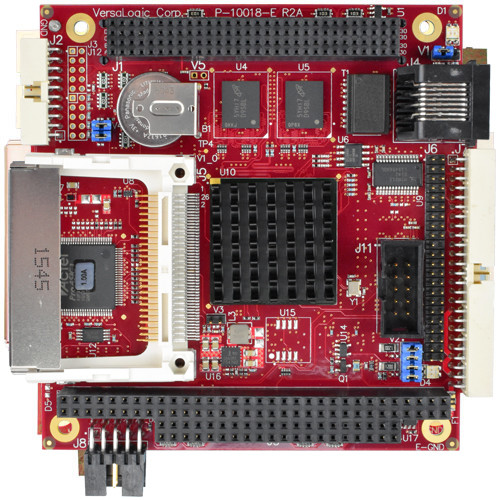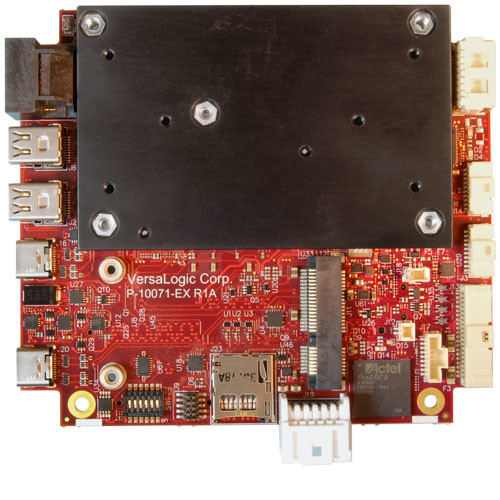The Top 5 Benefits of PC/104 for Future Designs
May 18, 2020
Blog

PC/104 started in 1987, so it's valid to ask why someone would be using it in 2020? Especially in a world where consumer electronics have us expecting the latest and greatest every year.
PC/104 started way back in 1987, so it’s a valid question to ask why someone would be using it in 2020 – especially in a world where consumer electronics have conditioned us to expect the latest and greatest in technology each and every year. But when building an application for markets like healthcare or defense, you want to work with a product that’s stable, reliable, flexible, expandable, rugged, and supported with a long (10+ year) product lifecycle. THAT’S why PC/104 is still being utilized today.
PC/104 is stackable, rugged, compact, and familiar. The benefits are many, but we’ve compiled our top five:
#1 – Rugged & Reliable
PC/104 got its start in mid '80s and quickly became widely adopted as the standard for industrial rugged computers. Unlike Raspberry Pi and Arduino, PC/104 was designed to function reliably at temperatures from -40° to +85°C and withstand shock and vibration to MIL-STD-202, making PC/104 the perfect choice for a wide range of industrial and military applications.
VersaLogic has been designing and manufacturing rugged, reliable PC/104 computers such as the EPM-14 Cougar from the very beginning and utilizes that 30 years of experience to deliver quality PC/104 products that, on average, have a failure rate of less than 0.5 percent. That means, regardless of the conditions, when you need it to work, VersaLogic PC/104 computers deliver!

#2 – Long-Term Availability
If the world of technology is a river, areas of the river are full of rapids and rough water. But some are willing to take the risk, right?
Industries such as medical device manufacturing want to enter the water at the right spot, where it’s calm and most of the dangers are known. They want to look downstream and see a, stable stretch of water that they can rely on during their journey of building medical devices.
VersaLogic has been a long time supplier to medical device manufacturing companies all over the world, providing stable, reliable, and long-term platforms like the EPM-16 TomCat to help companies that value long-term availability navigate the waters. Using Modified Commercial Off-The-Shelf (MCOTS) programs to modify products as needed, along with outstanding supply chain management, VersaLogic notifies you of problems or changes, and anticipates customer requirements by stocking critical component inventory to keep delivering you boards for years or = decades to come.

#3 – A Vast Ecosystem
Let’s define PC/104. "PC" equals Personal Computer and 104 is in reference to the 104-pin ISA Bus connector that was adopted by the PC/104 Consortium back in 1992. As a result of that adopted standard, hundreds of vendors began making every type of add-on (or stackable) accessory you can think of:
- From common needs like additional serial communication ports (CAN, RS-232, RS-485, Fieldbus, Aviation Bus, etc.)
- To adding digital I/O control, analog inputs and outputs, and relay control
- To more specific needs like frame grabbers, digital signal processors (DSPs), servo control, digital resolvers, and other more specific or custom-designed PC/104 modules.
Over the last 30 years the ecosystem of add-on options has only continued to grow to meet the needs of the market. And the PC/104 specification grew to keep pace with advancing technology requirements. When the PCI Bus was added to increase bandwidth, the number of accessories increased. Then along came the PCIe (One-Bank) and full 3-Bank connectors to increase the bandwidth even further, and so grew the ecosystem of available choices.
Having access to a PC/104 (ISA, PCI, or PCIe) bus connector with its rugged, stackable design or even incorporating it into your own custom IP, you gain a wealth of commercial off-the-shelf (COTS) products (CPUs and accessories) that help reduce development time and overall time to market. This also helps make your project upgradeable over time.
By working with a long-term availability partner like VersaLogic, you can reduce obsolescence risk and gain a standardized path for migration if it's needed. This allows you to focus all your efforts, energy, and resources into what matters most.
#4 – It’s Size
SWaP (Size, Weight and Power) is one of the fundamental principles on which PC/104 was founded. The idea was simple enough: take this new industry of “Personal Computers” and make a standard that was smaller, rugged, and consumed as little power as possible to meet demands. Like with all technology, the pressure to make the next generation of products smaller and more powerful has led to the introduction of many other board standards and sizes. Some of these includee Mini-ITX (VIA 2001), NUC (Intel , 2013), Nano-ITX (VIA 2003), ETX (Kontron, 2005), COM Express (which isn’t a single board computer and requires a custom baseboard) released in 2005 by the PICMG consortium, and of course, the latest, Raspberry Pi (which is NOT an industrial computer).
All of these boards found homes and each one was heralded as the replacement for PC/104. As it turns out, few, if any of these boards were actually smaller than PC/104 (90 mm x 96 mm) footprint; they generally used the same processors (or worse they used commercial processors); and offered much of the same performance but in most cases consumed more power and had shorter lifecycles. For those that were smaller, they lacked necessary features, expansion, and durability. None of them could address the rugged, stackable expansion that PC/104 offers or came with the huge eco-system of expansion options.
If size matters to you and the principles of SWaP apply to your next project, take a look at VersaLogic’s line up of low-, mid-, and high-performance PC/104 single board computers. VersaLogic is committed to supporting the thousands of design engineers that have built tens of thousands of systems used all around the world today in difficult environments performing critical functions.
#5 – Not Just ISA Anymore
You may ask, “Why would I use a standard built around the ISA Bus?” Well, it was the access to ISA bus expansion, with its flexible, rugged stackability that made PC/104 so successful. Those advantages continue today as the PC/104 standard has grown to include the PCI bus and the PCI Express bus (One-Bank and 3-Bank, respectively). Designing with PC/104 today doesn’t mean using the ISA bus, unless it’s what you need to support legacy systems. The incorporation of newer features, like on-board eMMC or soldered-down RAM, continue the legacy of ruggedness in a small size. Additional expansion options, like mini PCIe sockets, can be used for flexible add-on modules (like high-capacity solid state storage (mSATA), GPS, PoE, AIO, DIO, Serial Communication (RS232, RS422, RS485, CAN), Wi-Fi, Cellular, and many more).
Pair a reliable, stable single-board computer like the VersaLogic EPMe-30 Bengal with its PCIe (OneBank) expansion bus and a 4-port mini PCIe board (coming soon), and developers can realize up to 5 sockets for flexible mini PCIe expansion in a roughly 90 mm x 96 mm x 50 mm form factor. And, the package is one you can trust in an unstable environment and count on being available for years (or decades) to come.

The Future is from the Past – PC/104
What lies ahead? Depending on your needs the future could already be here. The EPMe-42 (Lion) delivers Intel Core i7 performance via its PCI/104-Express OneBank expansion, offering outstanding performance in a small package at only 12-13.5 W output power.

But, just as in the past, the latest demands of many rugged, real-world applications being developed for the market today are pushing (just like they did with desktops before) for access to more performance and features. VersaLogic is already working on developing products for that future and you’ll be able to read more about our progress around those future bends in the PC/104 river in future blog entries.
Meeting the Challenges of the Future
VersaLogic stands ready to meet the challenges of today and tomorrow. We’re here to help – reach out to our application engineers to discuss your project needs, whether it’s two months from now or a lot farther downstream.
Check back soon for additional information on VersaLogic’s further developments in PC/104. You can subscribe to our newsletter to be among the first to know, follow us on Facebook, Twitter, or LinkedIn, or contact us today to discuss your requirements!
Shawn Aery is a Marketing Product Specialist at VersaLogic Corporation. After serving in the US Navy as an electronics technician, he has worked exclusively in the rugged embedded computer industry for over 20 years serving as a Sales Applications Engineer helping customers find solutions or solve problems. Now as a Marketing Product Specialist at VersaLogic in Tualatin, Oregon, Shawn makes sure the voice of the customer makes its way into products.




